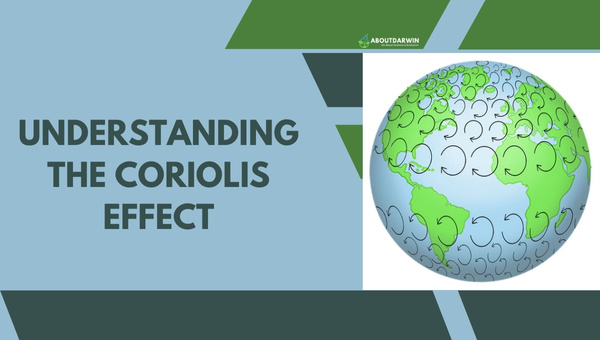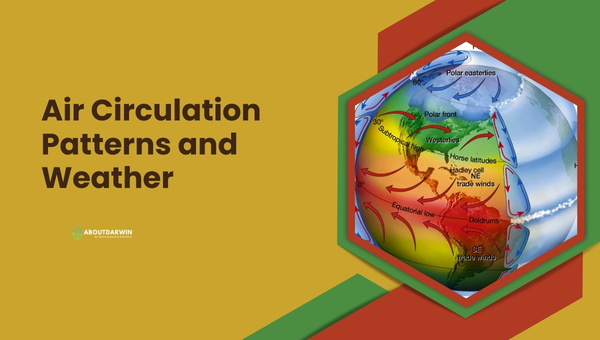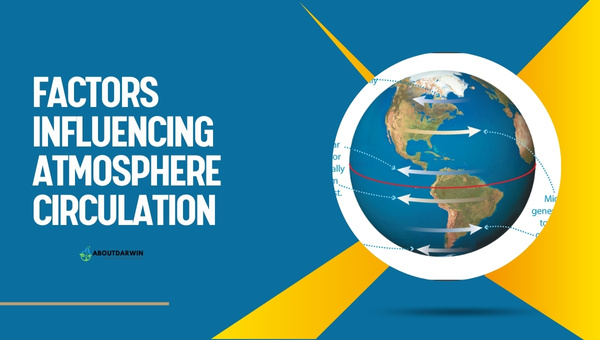Physical Address
304 North Cardinal St.
Dorchester Center, MA 02124
The Coriolis effect is a fascinating phenomenon that plays a critical role in meteorology and oceanography. It arises from the Earth’s rotation, causing moving air and water to turn and twist in predictable patterns.
This effect is responsible for the rotation of weather systems, influencing everything from trade winds to hurricanes.
As we explore its implications, we’ll uncover how this seemingly simple concept shapes global climate patterns and impacts daily weather forecasts. Get ready to see the world in a new light!
Contents
The Coriolis Effect is a phenomenon that describes how moving objects are deflected when they are viewed from a rotating frame of reference, such as Earth. This effect is crucial in understanding various natural processes, including weather patterns and ocean currents.

First identified by French engineer Gaspard-Gustave de Coriolis in 1835, it explains why winds and currents do not travel in straight lines but instead curve due to Earth’s rotation.
The Coriolis Effect is significant in meteorology, aviation, and oceanography, influencing everything from storm systems to the flight paths of airplanes.
Key Points about the Coriolis Effect:
The Coriolis Effect impacts air circulation in two ways:
Here are some critical points to remember about the Coriolis Effect:
You might now wonder, “What are some real-world applications of the Coriolis Effect?” Well, meteorologists and oceanographers utilize their understanding of the Coriolis Effect to predict weather and climate patterns.
Furthermore, it aids engineers in designing long-range artillery systems, as the Coriolis Effect can cause projectiles to deviate from their intended paths. The Coriolis Effect is a critical factor in shaping our planet’s atmospheric and oceanic conditions.
As humans continue to understand this phenomenon, we can better predict and adapt to Earth’s natural systems.
Also Read: Earth’s Geomagnetic Reversal: The Phenomenon of Polarity Flip
When discussing air circulation in the atmosphere, it’s essential to consider the Coriolis Effect. This phenomenon is responsible for how air moves across the Earth’s surface, directly influencing weather patterns.

At the global level, three primary air circulation cells are vertically-oriented loops of air movement. These are the Hadley Cells, Ferrel Cells, and Polar Cells. These circulation cells distribute heat energy and moisture around the planet, which is crucial in shaping our climate.
Let me break down some key characteristics of each cell:
The Coriolis Effect affects each of these circulation cells, which causes air to deflect to the right in the Northern Hemisphere and the left in the Southern Hemisphere.
These deflections lead to the formation of prevailing winds, such as trade winds, westerlies, and polar easterlies, shaping regional weather patterns.
To further understand the influence of air circulation on weather, let’s take a closer look at the Intertropical Convergence Zone (ITCZ). The ITCZ is a region where the trade winds converge, characterized by high rainfall and warm temperatures.
As a result, tropical rainforests are often found in these regions. Consequently, the ITCZ’s shifts in position can lead to drastic changes in regional climate and precipitation.
air circulation patterns play a significant role in determining weather patterns around the globe. The Coriolis Effect, in combination with the three general circulation cells, creates prevailing winds that shape regional climates.
Also Read: Explaining The Carbon Cycle: All You Need To Know
The Coriolis effect is a fundamental phenomenon that arises due to the rotation of the Earth. It describes how moving objects, such as air masses and ocean currents, are deflected from their intended path as they travel across the Earth’s surface.
This effect is crucial for understanding weather patterns, ocean circulation, and the dynamics of projectile motion.
Named after French mathematician Gaspard-Gustave de Coriolis, who first mathematically described it in the 19th century, the Coriolis effect plays a significant role in meteorology and oceanography.
When discussing the Coriolis Effect and air circulation in the atmosphere, it’s essential to consider the various factors influencing atmospheric circulation. In this section, I’ll delve into those factors and explain how they significantly shape the global climate.

Uneven solar radiation is the primary driver of atmospheric circulation. The Earth’s tilt and its curved surface lead to an unequal distribution of solar energy, with the equator receiving more direct sunlight than the poles.
This uneven heating creates temperature gradients, which generate pressure gradients and result in air circulation, driving global weather systems.
Here are some crucial elements that also influence atmospheric circulation:
In addition to these key factors, certain cyclical phenomena also impact atmospheric circulation:
Many factors shape atmospheric circulation, including the critical element of uneven solar radiation, Earth’s rotation, and geographical features like land-sea distribution, altitude, and mountain ranges.
Additionally, cyclical phenomena such as El Niño, La Niña, and the Arctic oscillation significantly influence worldwide weather patterns and air circulation.
The Coriolis ilmiö is a fascinating phenomenon that profoundly impacts our planet’s weather and ocean dynamics. Its influence on the movement of air and water due to Earth’s rotation is essential for understanding atmospheric patterns and navigation.
As we continue to explore its implications, the Coriolis effect remains a critical factor in fields ranging from meteorology to environmental science.
Recognizing its role enhances our comprehension of global systems and helps us better predict and respond to natural events.